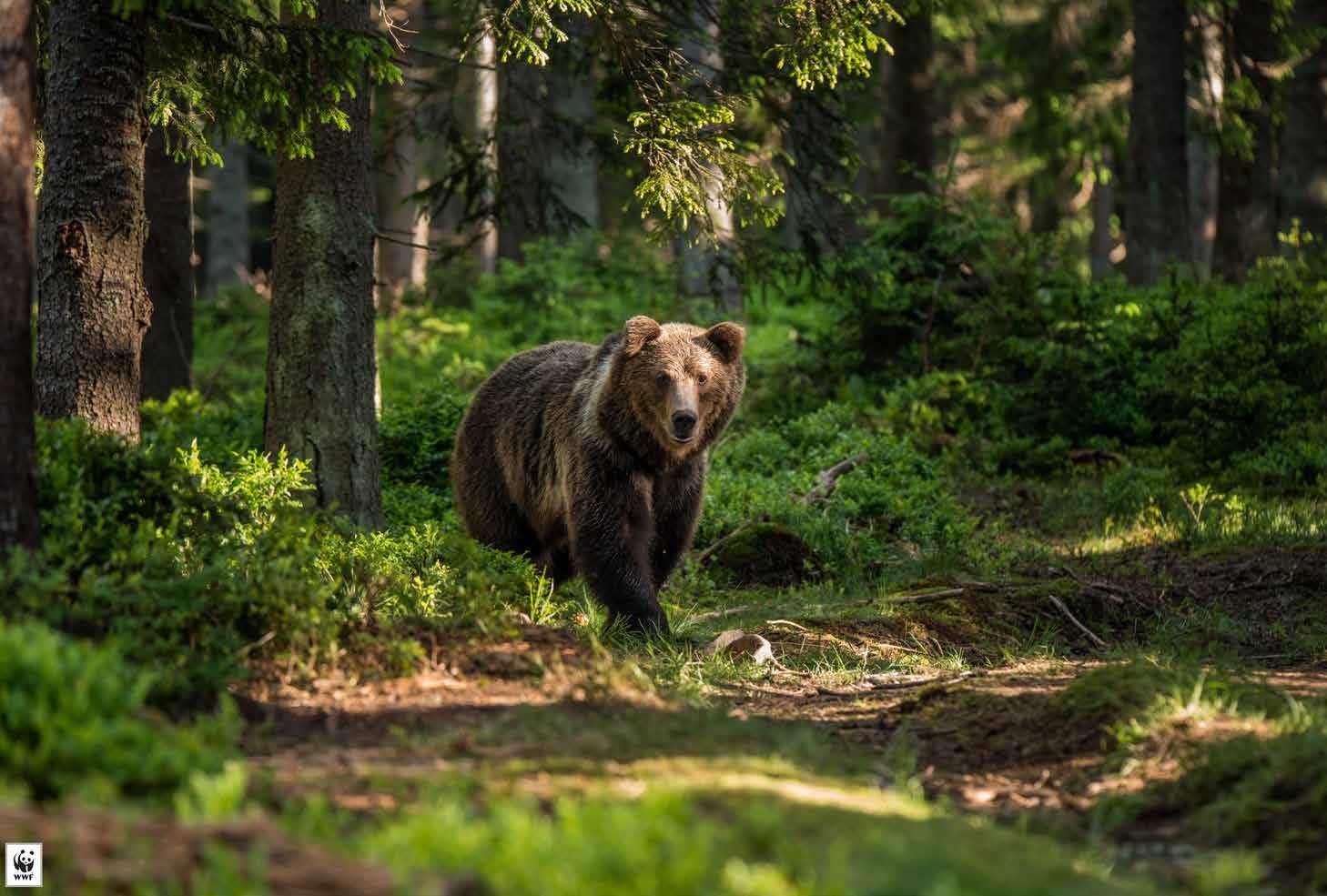Brown bear – Ursus arctos
Brown bears who live in the Dinarides are a part of the bigger Dinaric-Pindus population that is spread from the Alps on the north to the Pindus on the south. It’s population is estimated at about 3000 individuals, and its core is located on the Dinarides.
Brown bears used to inhabit lowland forests, flood valleys and natural grasslands, too, but they were pushed out by the expansion of human settlements. Thus, they are, nowadays, in hilly, wooded areas. They inhabit habitats that can meet their needs, in other words various types of forests, with a preference to stands of large-seeded deciduous forests, e.g. beech, oak, chestnut. It is especially important that the habitat provides opportunities of bear’s movement in all directions, as well as to the zones of various altitudes. Peace in the habitat is crucial in the winter because of newly born bear cubs. A bear is looking for food in the night, normally in the areas of lower altitude and greater spatial openness, or closer to people. During the day, it withdraws to peaceful and densely overgrown areas, where it makes day beds. Bear’s average daily movements are from 1,5 – 10 km. In the spring, bears are in search of lower areas with earlier vegetation and protein food. During the mating season (May-July), males move on a vast space in search of females. In the autumn, bears look for “mature” forests with quantities of nutritious fruit (beech fruit, acorns, forest fruits, anthills, etc.). In the winter, they withdraw to hard-to-access and peaceful locations to den, and females to deliver their cubs, too. It is estimated that, during its life, a bear uses a space of about 250 km². The limitation of the available habitat and a great space necessary for their lives prevent a significant increase of their population.
In the mating season, a female can mate with several males in one season so, there is a possibility that all the young from the same litter do not come from the same father. The young are born in the half of January during the denning season. Females give birth to one to four cubs, that are completely blind and without hair, with about 350 g weight. The cubs depend on the direct contact with their mom’s body for warmth and feeding on milk. The cubs suck until the beginning of April when they leave the den and follow their mom in search of food. They spend the first year of their lives with her and their next winter in the den, and they separate from her when she is ready to mate again.
In the Dinarides, the biggest threat for the brown bear present: fragmentation, habitat loss, as well as human-carnivore contact.

